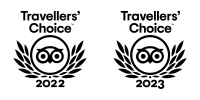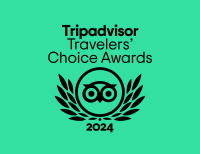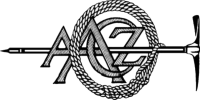- Home
- Nepal
- Adventure Activities
- Peak Climbing
- Mountain Expedition
- Local Tours
- Sirubari Village Homestay
- Ghale Gaun
- Kalinchowk Tour
- Halesi Mahadev - Maratika Cave package
- Chitwan Jungle Safari
- Day tour in Kirtipur
- Day tour in Kathmandu City
- Spiritual Tour to Muktinath
- Chitlang and Kulekhani
- Bardiya National Park
- Jeep Tour to Rara Lake
- Gosaikunda Lake
- Manakamana day Tour with cable-car ride
- 4WD Jeep Tour to Upper Mustang
- Family Holidays
- Heli & Mountain Flights
- Trekking Routes
- Kailash Mansarovar
- Bhutan
- Tibet
- Multi Country
- Domestic Flights
- Contact
- Home
- Nepal
- Adventure Activities
- Peak Climbing
- Mountain Expedition
- Local Tours
- Sirubari Village Homestay
- Ghale Gaun
- Kalinchowk Tour
- Halesi Mahadev - Maratika Cave package
- Chitwan Jungle Safari
- Day tour in Kirtipur
- Day tour in Kathmandu City
- Spiritual Tour to Muktinath
- Chitlang and Kulekhani
- Bardiya National Park
- Jeep Tour to Rara Lake
- Gosaikunda Lake
- Manakamana day Tour with cable-car ride
- 4WD Jeep Tour to Upper Mustang
- Family Holidays
- Heli & Mountain Flights
- Trekking Routes
- Kailash Mansarovar
- Bhutan
- Tibet
- Multi Country
- Domestic Flights
- Contact
Mount Himlung Expedition
HIMLUNG EXPEDITION -27 Days
Overview of the Himlung Expedition
Himlung Himal (7126M) lies in the secluded Mustang region close to Tibet border. Himlung was allowed for climbing in the same year of opening of Mustang valley for tourism in 1992. Same year the first ascent of the peak was made by a Japanese expedition team.
As the peak lies in the restricted area of Nar Phu valley, the trek to the base camp itself is a magnificent experience. As the valley is between the Annapurna and Manaslu region, it is a real gem which allows the trekkers to experience both raw Himalayan nature and ancient Buddhist culture.
Highlights:
- Summit of Himlung Himal at 7126 meters
- Panoramic views of Dhaulagiri range, Annapurna range, Manaslu and other peaks
- Trekking through Naar Phu valley a restricted area
- An essence of being in Tibet due to Tibetan cultures and monuments
Detailed Itinerary
DAY 01 - Arrive in Kathmandu
You will be met at the airport and taken to the hotel to relax.
DAY 02 - In Kathmandu
Free day in Kathmandu for equipment preparation,
DAY 3 - Drive to Dharapani
After early breakfast at the hotel, we start our road adventure to Dharapani which takes around 9/10 hours’ drive.
DAY 4 - Trek to Koto (2600M) – 6/7 Hours Trek
Today we head towards West, we pass through the scattered pine forest with a scenic view of Manaslu and Annapurna II on the left. Today we spent the night at Koto.
DAY 5 - Trek to Dharmashala (3230M) – 6/7 Hours Trek
After breakfast, we start our trek to Dharamshala leaving Annapurna Circuit trail. We then enter the Naar Phu Valley following the Naar Phu Khola. Gradually trekking up and down through coniferous forests with a beautiful view of Lamjung Himal on the south; we reach Dharamsala (3230m) where we will stay overnight.
DAY 6 - Trek to Kyang (3820M) – 6 Hours Trek
From Dharamshala, we trek towards Kyang passing through a small village called Meta. We follow the Phu Khola on a slightly ascending trail to Chyakhu. From here the terrain gets steeper as we head to 'Upper Chyakhu' and then to Kyang (3800 m).
DAY 7 - Trek to Phu Gaon (4200M) – 5 Hours Trek
Today we will trek to Phu Gaon, one of the hidden villages of Nepal, which will take approx. 5 hours walk. Passang mani walls, stupas and prayer flags along the way with a gradual ascent we reach Phu Gaon. Today is a half-day trek, so we have enough time to explore Phu village in the afternoon.
DAY 8 - Rest Day in Phu Gaon
Reserve day at Phu Village to acclimatize & rest your body. Re-energize your body as we will be going to Himlung Base Camp tomorrow.
DAY 9 - Trek to Himlung Base Camp (4920M) – 5/6 Hours Trek
We headed towards Himlung base Camp where we spent almost ten Days .
DAY 10 to Day 24 - At Base Camp Climbing Period
Rest day – Puja – climbing training
Touch Camp I and descend back to basecamp
Second Rotation
Climb to camp I (overnight)
Touch Camp II (Overnight)
Climb halfway to Camp III and descend back to basecamp
Rest and prepare for the summit push
Summit push
Climb to camp II (overnight) –
Climb to Camp III (overnight) –
Summit – start at 3 am – reach by 1 pm – descend back to Camp III or Camp II
Descend to base camp
Reserve day at the base camp
Packing and clearing the Base camp after the summit
DAY 25 - Trek down to Meta (3560M) – 7/8 Hours Trek
We bid our farewell to our camping crew members. After breakfast, we descend to Meta, which takes around 7/8 hours of trek.
DAY 26 - Trek to Koto (2600M) – 7 Hours Trek
We trek down to Koto leaving Nar Phu valley
DAY 27 - Trek to Jagat (1300m) – 7 Hours Trek
After breakfast at the lodge, we drive back to Kathmandu
This trip can be redesigned or redeveloped as per your taste, For more information please e-mail us at This email address is being protected from spambots. You need JavaScript enabled to view it.
Cost and dates
We do small group trek or private trip as your request.
For quick information / contact us at whatsapp/viber + 977 9841815039
Or Drop us inquiry at This email address is being protected from spambots. You need JavaScript enabled to view it.
Tips & Resources
Climbing Gears
- Ice Axe
- Crampons
- Harness
- Tape Slings
- Screwgate karabiners (2 lock, 2 unlock)
- Descender/Eight figure
- Plastic mountaineering boots
- Ascender/Jumar
- Helmet
- Snow Bar
- Rope
- Ice Hammer
- Ice Screw
Accessories
- Sleeping bag
- Headlight with batteries
- Water bottles
- Toiletries
- Small wash towel
Medical Supplies
- First-Aid kit
- Anti-diarrhea pills (Imodium)
- Anti-headache medication (Aspirin or Ibuprofen)
- cold medicine
- antibiotics for stomach infection
- anti-altitude sickness medication: Diamox (Acetylzolamide)
- water purification tablets
Personal Clothing items
Head
- Sun hat or scarf
- warm fleece hat
- Black Sunglasses
Upper Body
- T-shirts
- Weight thermal tops
- Fleece jacket
- Fleece Wind-Stopper jacket
- Waterproof jacket
- Down vest or jacket
Hands
- Lightweight gloves
- Heavyweight gloves or mittens with a waterproof shell outer
Lower Body
- Underwear
- Hiking shorts
- Lightweight cotton long pants
- Light and expedition weight thermal bottoms
- Fleece or wool pants
- Waterproof pants
Feet
- Thick, warm wool hiking socks
- Hiking boots with spare laces
- Camp shoes (sneakers or sandals)
Personal Hygiene
- Two tubes lip sun cream, at least 1 large tube regular sun cream (min. factor 30), some after-sun lotion in case you do get a sunburn
- toothpaste/brush set
- hand sanitizer gel
- 1 synthetic towel
Frequently Asked Questions
We suggest that people undertaking a first climb should have at least overnight trekking experience. For those who wish to take on a technically difficult, remote or extreme altitude mountain we'd expect participants to have appropriate experience and skills.
Climbing expeditions usually attract people in their twenties to fifties. Participants tend to be seeking a good quality, safe, well supported, good value and enjoyable adventure rather than the lowest cost.
The fitter you are, the more fun you (and your companions) will have. You will find guidance on preparing for your expedition on each adventure's web page (search here), our info packs and trip dossiers. A minimum level of fitness would have you being able to walk all day on uneven, hilly ground, carrying your day pack, and be able to get up again the next day. Many climbs will require a higher level of fitness and strength so you can carry heavy gear to high camps and really exert yourself on summit day.
Included are individual sleeping tents for the trekking phase of most climbing expeditions, with dining and kitchen tents. On the mountain participants share serious, proven mountain tents. Climbing teams are equipped with emergency communications and first aid equipment as well as more prosaic things like climbing and cooking gear.
The short answer - you! All participants are expected to behave in a responsible manner, taking due care of themselves and others. Your expedition leader is responsible for the group including participants and staff. He or she will advise, manage and assist everyone, sometimes with the support of an expedition first aider or doctor, and will be assisted by guides, sherpas, and you and your climbing colleagues, all of whom will have roles to play.
Despite the best precautions, people do sometimes fall ill, sprain something or develop symptoms of AMS. Our expedition leaders will manage your care keeping in mind what's best for you and the rest of the group. Precautions include first aid qualifications and kits, emergency communications, evacuation plans, your travel insurance cover and our pre-preparation and medical advisors.
Visit us
-
JP Marga, Thamel, Kathmandu, Nepal
-
+977-01-5365371
-
+977 98418-15039
(Whats App, Viber & Telegram)








